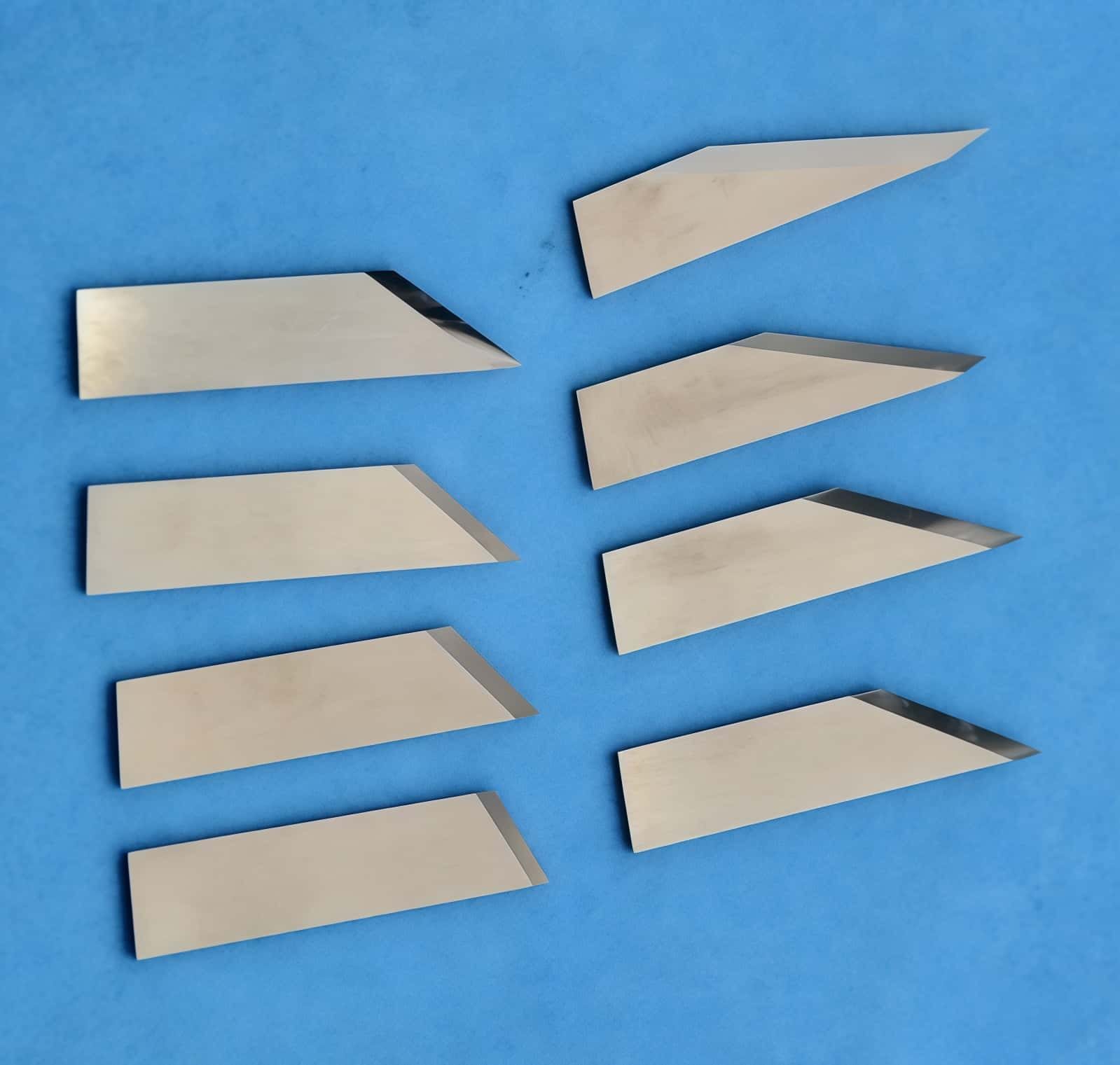
Computer proofing and cutting machine blades vary in specification depending on the machine type and application. Proofing machine blades, such as doctor blades, are typically made from materials like stainless steel, ceramic, or plastic, with edge shapes like sharp, rounded, or beveled designed to control coating thickness and uniformity in processes like film coating or printing. Key specifications include blade material, blade angle (which affects coating thickness), blade height/gap, and pressure applied during use. These blades need to be selected based on desired film thickness, material compatibility, and process speed.
Cutting machine blades for computer-controlled cutting machines (such as CNC cutters for cardboard, fabric, or other flexible materials) are often tungsten steel or carbide to ensure durability and precision. These blades are selected based on material type (cardboard, fabric, leather, plastic, etc.), cutting thickness (often up to 50mm or customized), and cutting speed (ranging from a few hundred to a couple thousand mm/s). Blades can be specialized for cutting, semi-cutting, or other functions like indentation or drawing marks, depending on the tool configuration.[2][4]
Specifications to consider for selection:
- Blade material and durability (stainless steel, tungsten carbide)
- Blade edge type and angle (sharp, beveled, rounded)
- Thickness and width compatibility with the machine
- Cutting or coating speed capacity
- Application material type (e.g., cardboard, fabric, thin plastic, film)
- Cutting depth or coating thickness requirements
- Machine model compatibility and tool configuration options
The blades for Aol, Aoke, Huayao, Itta, Jindex, Jwei, Iecho, Ruizhou, Ruk, and Sinajet computer proofing and cutting machines generally share these specifications and application traits:
- Blade length example: 24.5mm length and 2mm diameter is common for oscillating plotter knife blades (e.g. Aoke, Jwei, Ruizhou, Ruk) with a fixed pressure ring design that must be paired with compatible branded holders. This design prevents blade rotation when used with ordinary holders.
- These blades are used on CNC cutting systems known for precision cutting of soft materials such as fabric, leather, upholstery, PVC, cardboard, and coated paper. Cutting speeds can reach up to 1200-1500 mm/s, supporting multiple cutting modes including full cutting, half cutting, punching, and perforating to allow versatile manufacturing applications.
- The machines feature integration with CAD/CAM software for importing designs, enabling intelligent and automated cutting systems with functions like automatic feeding, deviation correction, and waste removal for enhanced efficiency and precision.
- Selection of blades depends on the type of cutting tool needed (oscillating knife, circular knife, drag knife, pneumatic knife), compatible blade holder, material type, and cutting requirement (depth, angle, speed). Many manufacturers provide custom blade options tailored to specific production needs in industries such as apparel, footwear, packaging, automotive interiors, and composite materials.
- Machines like those from AOL come with interchangeable tool heads supporting oscillating knives, circular knives, pneumatic knives, punch tools, and marking pens, further expanding application possibilities. Cutting thicknesses can reach up to 20mm or more based on model.
- Key application areas include garment cutting, leather goods, packaging, composites, automotive interior materials, and small to mass production runs requiring high accuracy and repeatability.
This aligns with the complex, integrated nature of these blade and machine systems for high-speed, high-precision cutting across diverse industries and materials.
Applications:
- These cutting blades are designed for soft materials such as leather, fabric, PVC, cardboard, coated paper, carton board, and thin plastics.
- Used in industries like apparel, packaging, graphic arts, advertising, and textiles where precision cutting of samples and small production runs is needed.
- Machines equipped with these blades support multiple cutting modes including full cut, half cut, creasing, punching, and perforation.
- Computer proofing and cutting machines typically have laser positioning and vacuum absorption features for precision cutting.
Blade Selection Tips:
- Match the blade type (vibration, drag, oscillating) with the cutting machine model and material to ensure compatibility.
- Use blades with fixed or removable pressure rings according to the knife holder type.
- Choose blade angles based on material thickness and cutting precision required (sharper angles for thin delicate materials, larger angles for thicker tougher materials).
- Ensure blades are compatible with the CAD/CAM system used to optimize cutting paths and accuracy.
- Replacement and maintenance procedures vary slightly by brand; follow manufacturer guidelines for installation and blade change.
Shenzhen Oyea Machinery Co., Ltd specializes in the production, manufacturing, supply, and distribution of blades designed for a wide range of computer proofing and cutting machines, including those from brands such as Aol, Aoke, Huayao, Itta, Jindex, Jwei, Iecho, Ruizhou, Ruk, and Sinajet. Operating as a leading OEM and ODM provider based in China, the company leverages advanced technology and expertise to meet global demands.
With a well-established international footprint, Shenzhen Oyea Machinery serves clients across diverse markets spanning Europe, North America, the Middle East, and Asia. Specifically, the company caters to countries such as Germany, France, the UK, Poland, the United States, Russia, Vietnam, Thailand, Indonesia, Singapore, the Netherlands, Switzerland, South Korea, Japan, Turkey, the Philippines, Hong Kong, Taiwan, Italy, Spain, Hungary, and the Czech Republic.
Through its commitment to understanding and addressing the unique requirements of its customer base, Shenzhen Oyea Machinery delivers customized solutions aimed at optimizing performance and driving innovation. This approach reflects their dedication to forging sustainable business partnerships while maintaining superior manufacturing standards. Constantly pushing the boundaries of what is possible, the company remains a benchmark for excellence within the industry.
PREV : How To Choose Different Types Of Cutting Tools And Blades For ATOM Cutting Systems NEXT : Summa 500-9802 Esko BLD-DF112 MultiCam 94-02466-910.301-S Colex T00312 Carbide Knife Blades Shop





